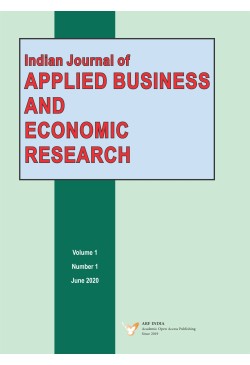The COVID-19 pandemic has surely damaged the global economy by pushing it into a period of contraction and recession after a decade of poor performance, by and large. Just like rest of the world, it has also affected Asia, which is the world’s largest economic and energy consuming region. Similarly, accounting for a major part of this continent and its population, the CAREC region has not been spared by the pandemic.
Its nature is such that it eventually results in social and economic destruction which will last for a significant period of time even after its full containment, the pandemic has signified the danger of the worsening global warming and climate change and the urgency of shifting from the current carbon-intensive economy to a low-carbon and eventually, zero-carbon one. This is especially signified in the CAREC region as a large energy consumer housing China, the world’s single largest energy consumer.
As a global necessity, the mentioned shift in the CAREC region demands replacing oil, gas and coal as the main source of energy with sustainable alternatives. In addition to nuclear energy, developing the region’s renewable energy sector is not only a necessity for reducing its greenhouse gas (GHG) emissions, but also an available means for revitalizing its economy. Efforts to develop the CAREC region’s production of environmentally clean renewable energy (wind, solar, geothermal, hydro and small hydro) can certainly boast the regional economy damaged heavily by the pandemic. Such efforts, if wisely made, will involve a wide range of industries from mining to manufacturing for the required raw material and parts for the mentioned power generators and also for the electricity-based emerging industries such as electric vehicle producers. Added to their existing large manufacturing units, the availability of such necessities in large-scale could also provide the possibility for setting up small-scale and, thus, low capital-intensive manufacturing units for the mentioned generators and vehicles all over the CAREC region.
Parallel to this, producing hydrogen for fuel cells, not through methane steaming, but from electrolyzing of wastewater after removing its solid waste could be another feasible and necessary project for expanding the regional countries’ range of alternatives to fossil energy. The resulting hydrogen could be especially, but not exclusively, used for public transportation (e.g., city buses) and land transportation of goods (trucks) to help the CAREC region decrease its GHG emissions substantially, while satisfying its essential needs.
As feasible and plausible projects, developing and expanding the CAREC region’s renewable energy sector and hydrogen production capacity and their respective bus/truck engines and electric vehicles could not only help the region to stop and eventually reverse global warming as an environmental and economic imperative, but also help revitalize and potentially expand its economy after a period of the pandemic-imposed contraction. As well, these projects could potentially help the CAREC region establish itself as a leading global supplier of renewable and hydrogen technologies with its obvious economic benefits.
Against this background, this study aims at discussing the current energy situation of the CAREC region as a prelude to explain as to why efforts must be made systematically and purposefully to achieve net zero-carbon economies for the regional countries in the shortest period time to avoid a phenomenal increase in the global temperature. Towards this end, their fossil fuel-dominated and, thus, GHGemitting energy mixes must be replaced with environmentally sustainable ones. Given the region’s need for sustainable development, the study argues as to the merit of combing the mentioned necessary energy switch with the required economic revitalization program to offset the extensive negative impact of the COVID-19pandemic on the CAREC countries’ economies. Within this context, the various widely-available clean energy options for these combined purposes (i.e., renewable and nuclear energy) are identified, in addition to “green hydrogen” as an emerging environmentally-clean type of fuel. As well, this study makes certain policy recommendations to facilitate the CAREC countries’ embarking on these two projects and help them maximise their environmental and economic gains.
The adopted methodology for this policy study is based on the objective analysis of the relevant secondary sources. Special efforts have been made to use a widerange of credible and unbiased sources produced by the internationally-known entities concerned with energy, environment and sustainable development. To secure the study’s objectivity as well as relevance to the specific situation and needs of the CAREC countries , the pros and cons of the available energy options are accurately identified. Equally, the necessity of regional cooperation to achieve both the needed energy switch and the economic boast is discussed, given the differences between and among the CAREC countries in terms of energy and economic options and level of technological and industrial capabilities.
